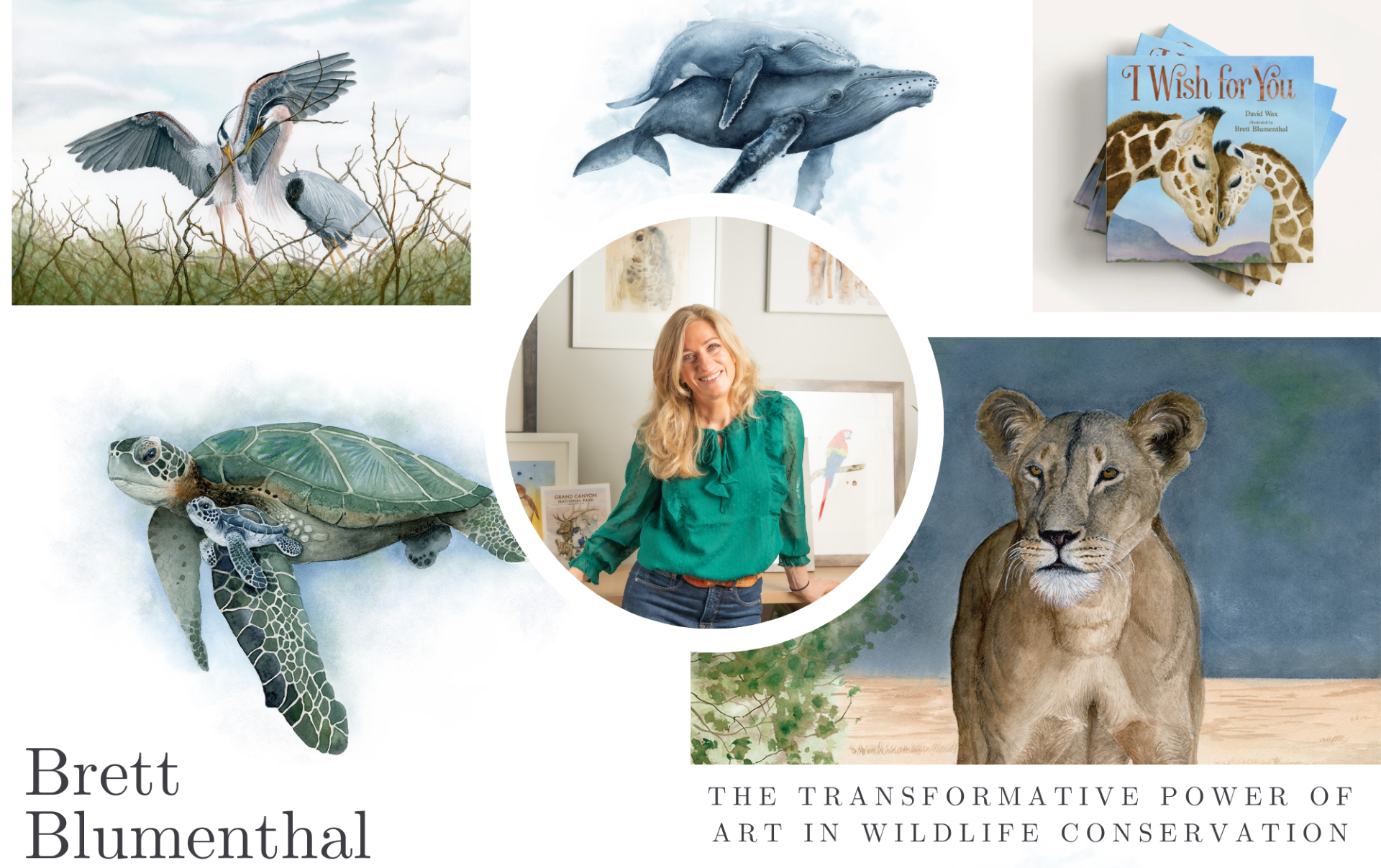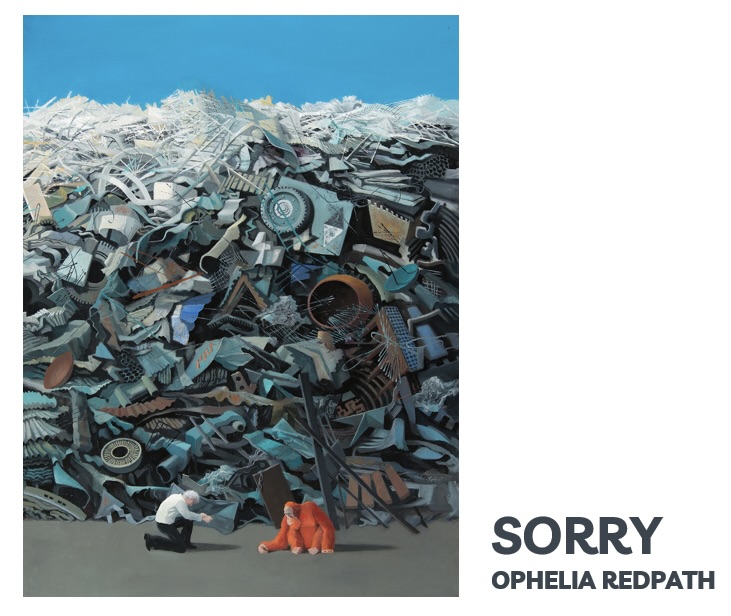The Transformative Power of Art in Wildlife Conservation: Inspiration from Artist Brett Blumenthal
Artist and activist Brett Blumenthal BArch '96, MBA '04, visited Cornell University on Tuesday, April 16 to share her perspectives on the power of art to communicate, inspire, and transform conservation efforts.
Blumenthal’s career has spanned architecture, management, consulting, strategic design, authorship in both wellness and children's genres, and wildlife and landscape art. In her talk, she discussed how art can better communicate complex issues and showcased examples of inspirational artists working in conservation. She also shared lessons from her own path and made a call for fostering collaboration between artists, conservationists, educators, and the general public in order to revolutionize the way we approach wildlife conservation.
“We are at a crucial time in the history of our planet,” Blumenthal stated. “We are bombarded by headlines that paint a bleak picture for the future of our planet and for wildlife.” However, she argued that this typical doomsday approach, relying on stark statistics and science, can be alienating and ineffective at inspiring action. “People can feel hopeless, they can feel overwhelmed, and this can lead to apathy and indifference. So we really need to do better,” she said.
Blumenthal emphasized that humans are highly emotional, making decisions 70 to 95 percent of the time based on emotional factors. Despite this, scientists and the media often use rational arguments to help people understand critical issues. “We need to find a better way to communicate with people, foster a connection, and inspire them to take action," she said. “Art has the real power to inspire, educate and motivate people to move in a direction that could be transformative.”
Defining art to include painting, sculpture, multimedia, film, and other creative expression, Blumenthal believes that the emotional response to art is deeply personal, enabling individuals to connect with issues in a more authentic way. Art also transcends barriers such as culture, language, socioeconomic status, religion, and generations. Furthermore, art “transcends time and space,” said Blumenthal. “When you experience art, the experience will stay with you forever. This really helps ignite change and action.”
To illustrate her point, Blumenthal contrasted the typical science-based communication about threats to animal species with how an artist might depict the same issue. Sharing data—such as the fact that there has been an 80 percent decline in the Borneo orangutan’s habitat due to timber harvesting and palm oil production—can “fall flat,” she said. She showed an evocative piece by artist Olivia Redpath depicting human guilt over habitat destruction alongside the non-judgmental innocence of the endangered ape. “Redpath’s ability to convey the same message in a visual piece can be really highly provocative," Blumenthal said. “It draws a person in, engages them, and potentially gets them to learn more about the situation.” Learning more can then lead to action such as donating to orangutan conservation or reforestation efforts.
Blumenthal highlighted several other examples of artists and organizations leveraging art's emotive power to impact conservation. The David Shepherd Foundation, founded in 2008, has raised over £2 million for wildlife conservation through their "Wildlife Artist of the Year” and “Global Canvas Children’s Art” competitions. Founded by photographers and filmmakers, SeaLegacy uses stunning visuals to document marine ecosystems in remote corners of the ocean. Multimedia artist Asher Jay evokes "visceral responses" to wildlife crime through provocative campaigns and public installations. Photographer John Hyde's work in Alaska and the Pacific Northwest aims to change mindsets about protecting ecosystems and species in the context of land management decision-making.
Blumenthal feels that her own artistic impact lies especially in engaging the next generation. When she was pregnant with her son, Blumenthal created nursery art with wildlife to share her passion for animals and the environment with her child. "He woke up every day smiling and full of joy and pointing at the animals," she recalled. "It inspired me to want to do this for other children and create more artwork that other children could enjoy, and potentially fall in love with wildlife as well."
With this commitment, Blumenthal has donated 10 percent of her over 40,000 art sales to wildlife causes, totaling around $100,000 as of 2023. Her art is created for and sold worldwide through retailers and many nonprofit organizations, including the National Park Service, Center for Biological Diversity, and the St. Francis Wolf Sanctuary. Blumenthal’s first children's book, I Wish for You, celebrates nature, teaches values, and explores biodiversity and the natural world.
Looking ahead, Blumenthal urged for collaboration across disciplines to harness art for conservation goals. For educators, she suggested inviting artists to take science classes to translate data into emotionally resonant artworks. For scientists, she proposed bringing on artists-in-residence to visually document research and species.
“If you're interested in using art in some form or fashion, think about what your goal is,” she advised. “Do you want to drive awareness about the specific species that you're working with? How do you attach that to the human element?” Blumenthal also encouraged artists to educate themselves on conservation issues, take courses, and let their passion for particular species drive their work. She called on everyone to financially support artists giving back to environmental causes, and to share their appreciation for nature in order to cultivate an "open mind and a dialogue that can foster action."
“We know that the way we've been communicating for the most part has not been the most effective in engaging a broader audience,” Blumenthal concluded. “We need to find a way to create an emotional connection to the issues and help people understand the value of conservation,” she said. Blumenthal encouraged everyone to “let your passion drive your work. Anyone can be part of this movement and move the needle.”
This event was hosted by the Cornell K. Lisa Yang Center for Wildlife Health and the student-led Zoo and Wildlife Society (ZAWS) based at the Cornell University College of Veterinary Medicine.
Written by Caroline Stamm ‘24


